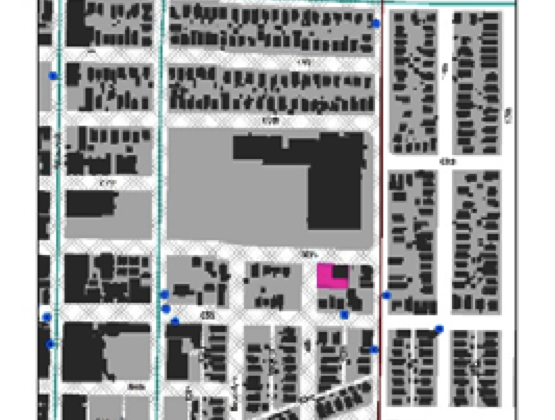Futurewise: More Housing for Roosevelt
The following is the text of a letter sent to the Seattle City Council by Futurewise concerning efforts to take prime land for housing and turn it into a park. We have asked that the Mayor and Council reconsider their efforts and focus on building more affordable housing on this site. In addition, a plan has emerged to create housing and a park at the site.
April 8, 2015
Seattle City Council
PO Box 34025
Seattle, WA 98124‐4025
Re: City of Seattle’s Use of Sisley Properties
Dear Seattle City Council members:
Housing is clearly the key focus of attention at this moment in Seattle. Our city is attracting jobs and residents at an unprecedented rate, bringing resources and opportunity, but also putting pressure on our limited housing stock and transportation system.
We commend your leadership and the work of planning staff to make affordable housing a priority and to set a clear 10‐year goal of housing units and to do the hard work to develop and put in place strategies to achieve this goal. Based on this goal, the City and its partners need to be producing approximately 2,000 new affordable housing units per year for at least the next 10 years, more if we are to catch up with our current affordable housing deficit. Given this challenge, the City should take every opportunity it is presented to prioritize housing.
Publicly owned land presents that opportunity to not only demonstrate the City’s commitment to affordable housing but also the urgency and the priority the City feels this issue requires. That is why we were excited about the opportunity the City’s seizing of the Sisley properties. We were, however, surprised by the City’s quick decision to use these properties to create a new public park before considering their use for affordable housing. The City’s decision is inconsistent with its stated commitment to create more affordable housing and its commitment to creating “more livable, walkable communities for all”.
While we understand the benefits of parks in neighborhoods, we feel strongly that this is not the best use of these properties. With affordable housing being one of the most significant challenges the City of Seattle is facing and given the location of the properties, we believe the properties should be utilized for affordable housing.
The properties present the opportunity to produce between 50 and 60 affordable residential units which would provide 50 to 60 families with safe, quality housing in a neighborhood that has the amenities and services which all affordable units should enjoy. When affordable housing is placed near strong schools, jobs, transit and basic services, it means even more to help lift a family out of poverty and more investment in that family’s future. The provision of stable, safe, and affordable housing is shown to have a profound effect on childhood development, educational performance, and health outcomes.
The neighborhood these properties are located in already has a high level of parks service. Approximately 82.2% of area residents live within a quarter mile of a park. Additionally, there are three parks and playgrounds within a ó‐mile of the properties. These properties are also located within one mile of quality food stores, a community center and a library, all amenities important to all families, but particularly those with lower incomes.
Furthermore, the properties have excellent transit service, including four bus lines within a mile of the site offering frequent transit service to the surround areas and downtown Seattle. This transit accessibility will increase significantly with the opening of the Roosevelt Sound Transit station. This is a particularly important consideration in the siting of affordable housing. For many low income families, transportation is a significant cost. In the Roosevelt neighborhood, the average household spends 18% of their income on transportation. This is a lot less than what many low income families spend in the region and will likely fall even lower when the light rail station opens.
In helping improve access to opportunity, affordable housing and strong performing schools go hand in hand. All three schools in the Roosevelt neighborhood perform very well across the board relative to the Seattle School District*. Students of color also perform better than the district average.
We support the City’s desire to use these properties for public benefit and urge you to consider both the existing neighborhood conditions and the City’s urgent housing affordability needs in deciding the highest and best use for the properties. Given your leadership on addressing the challenges of affordable housing and in creating more equitable, livable neighborhoods, we encourage you to look at this decision in that larger context.
Please feel free to contact me if you have any questions. Thank you for the opportunity to share our thoughts.
Sincerely,
Amy Gore
Sustainable Communities Director
*95% of tenth graders in Roosevelt are proficient on state reading test compared to District average of 83%. 80% of 9th and 10th graders proficient on the state algebra and geometry test compared to District average of 50%. 94% of 10th graders proficient on state writing test compared to District average of 83%. 87% of 9th and 10th graders proficient on the state Biology test compared to District average of 71%. 91% of students graduate in four years or fewer compared to District average of 72%. 78% of graduates enrolling in higher education within 1 year of graduation compared to District average of 68%. 97% of students take college level course during highschool compared to District average of 72%.


